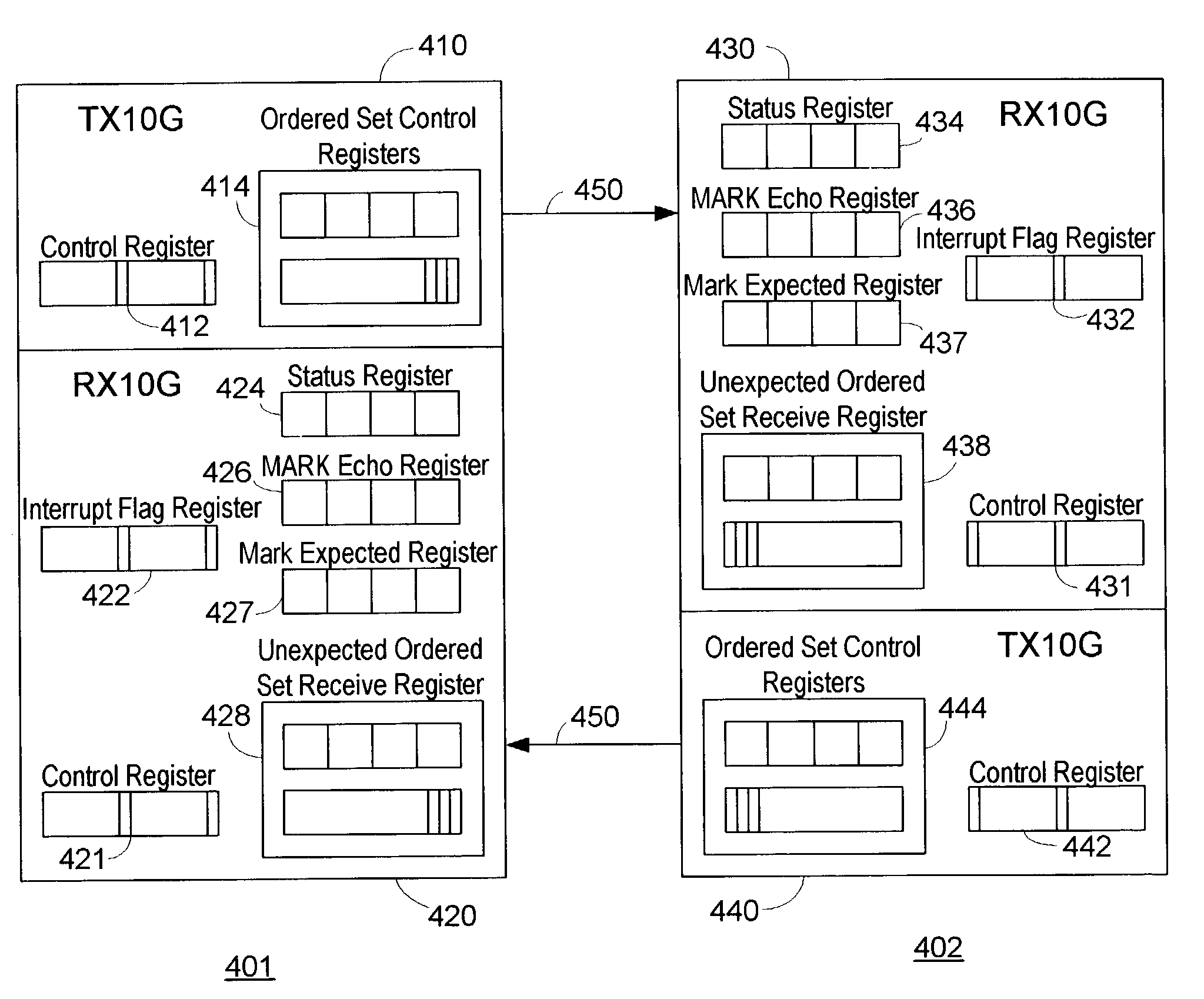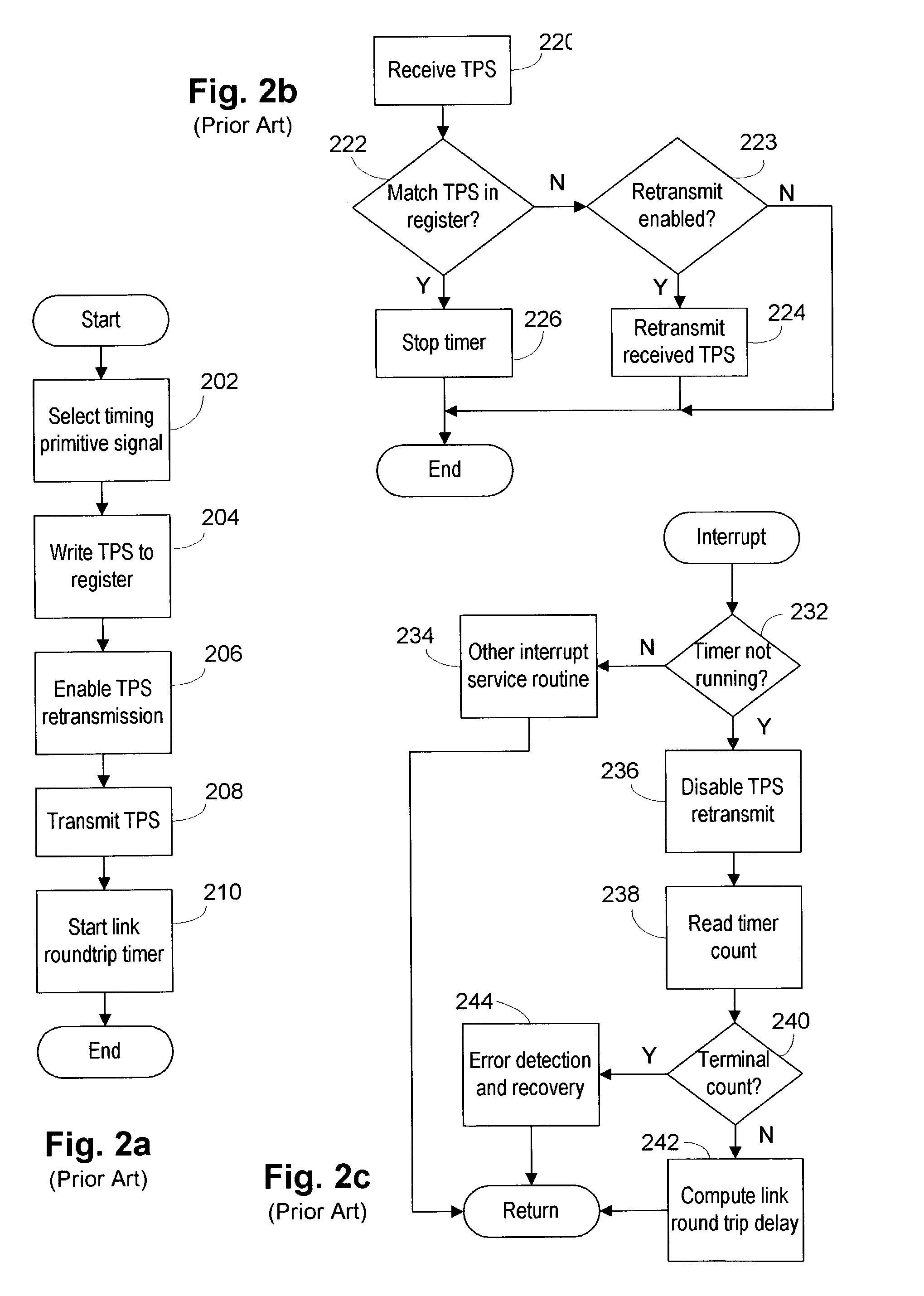Method and apparatus for round trip delay measurement in a bi-directional, point-to-point, serial data channel
a serial data channel and delay measurement technology, applied in the field of data transmission, can solve the problem of consuming valuable bandwidth in the communications system from unwanted recycling
- Summary
- Abstract
- Description
- Claims
- Application Information
AI Technical Summary
Benefits of technology
Problems solved by technology
Method used
Image
Examples
Embodiment Construction
[0020]One example of a process which embodies the present invention is shown in flow chart form in FIGS. 3a, 3b and 3c. In Block 302 of FIG. 3a, a unique timing primitive signal may be selected by the originating switch (“Switch 1”). This particular timing primitive signal is then written to the control register of Switch 1 [Block 304] and the “expected register” of Switch 1 [Block 306]. The originating switch may send the value of the selected timing primitive signal to the responding switch (“Switch 2”) at the other end of the link [Block 308]. The timing signal primitive value may be contained in the payload of a frame sent by Switch 1 to Switch 2. A frame is a data unit containing a start-of-frame (SOF) delimiter, a header, the payload, a cyclic redundancy check value (for error detection and correction) and an end-of-frame (EOF) delimiter.
[0021]In one particular embodiment, Switch 2 stores the value of the timing primitive signal in an “echo register” within Switch 2 [Block 310...
PUM
 Login to View More
Login to View More Abstract
Description
Claims
Application Information
 Login to View More
Login to View More - R&D
- Intellectual Property
- Life Sciences
- Materials
- Tech Scout
- Unparalleled Data Quality
- Higher Quality Content
- 60% Fewer Hallucinations
Browse by: Latest US Patents, China's latest patents, Technical Efficacy Thesaurus, Application Domain, Technology Topic, Popular Technical Reports.
© 2025 PatSnap. All rights reserved.Legal|Privacy policy|Modern Slavery Act Transparency Statement|Sitemap|About US| Contact US: help@patsnap.com



